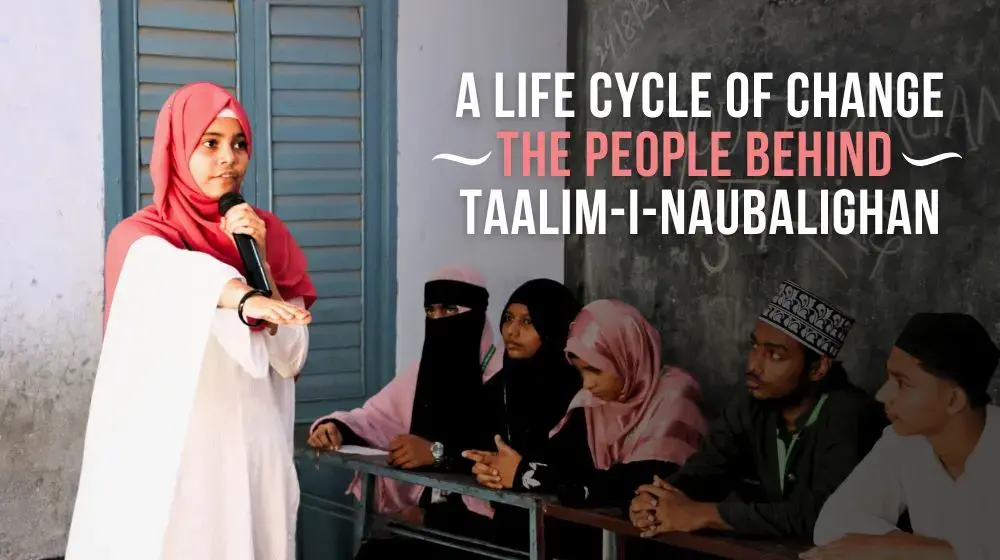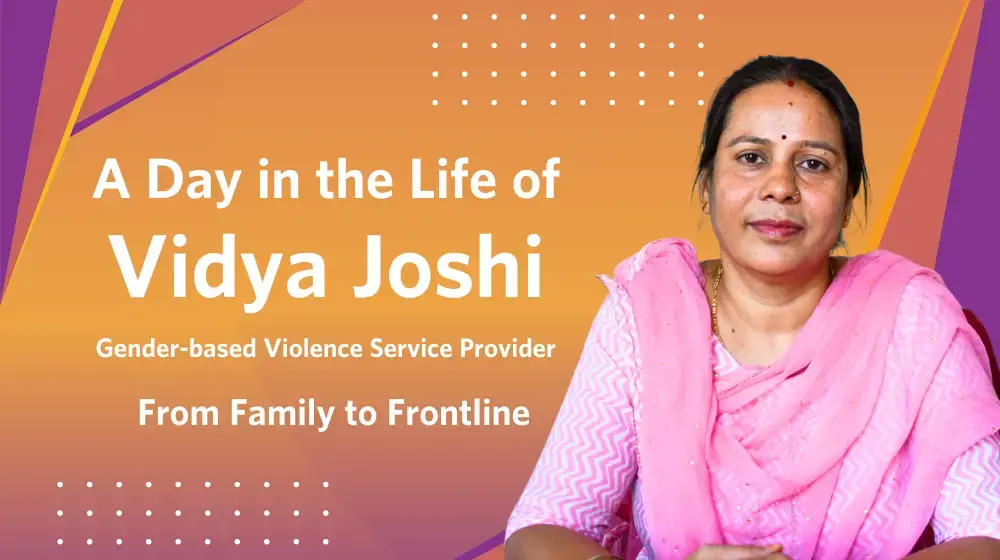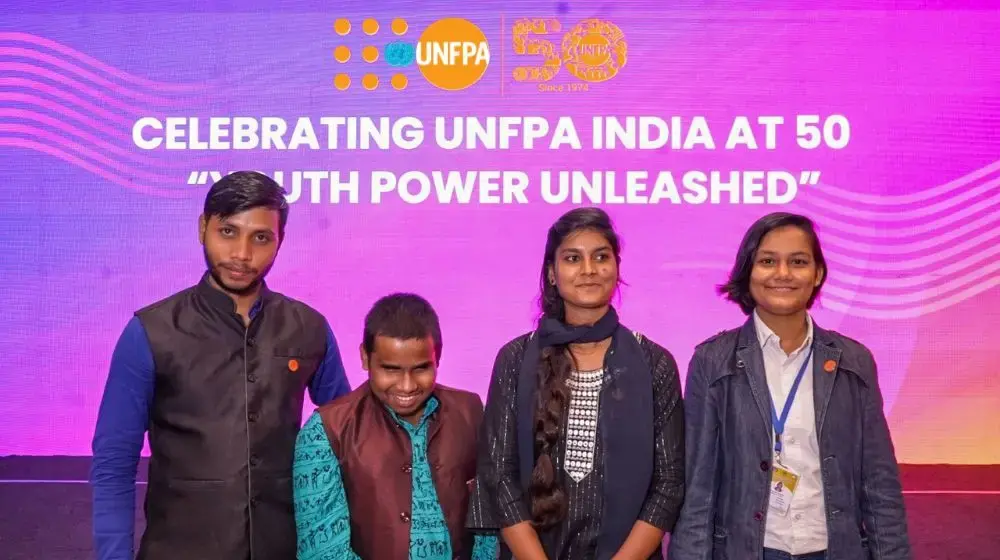The article has been authored by Andrea Wojnar, Resident Representative, UNFPA India; Susan Ferguson, Country Representative, UN Women and Yasumasa Kimura, Deputy Representative, UNICEF India
Eradicating child marriages and enabling girls to study longer and gainfully join the labour force is key to India’s future development, including its Covid-19 recovery, and overall economic transformation. On this International Day of the Girl Child, UN agencies call for a strategic new outlook to empower and educate India’s girls so they can participate equally in taking the country forward.
India has made great strides in reducing child marriages and advancing women’s education and empowerment. Between 2005-06 and 2019-21, child marriages declined from 47% to 23% (NFHS-5) in the country. And while it still shoulders the largest burden of child marriages in the world one third of the global total in the last 15 years, advances in India have contributed to a 50% decline in child marriages in South Asia.
Education has played a key role in this decline. Girls’ education, easily recognised as one of the fundamental drivers of empowerment, has shown a significant increase in the country between NFHS-4 and 5 (still only 2 in 5 complete at least 10 years of schooling). As per the ministry of education’s Unified District Information System for Education Plus(UDISE+), data the Gross Enrolment Ratio (GER) of girls has increased from 101.8 in 2018-19 to 104.5 in 2020--21 in the primary level while in the upper primary level, it has increased from 88.5 in 2018-19 to 92.7 in 2020-21.
Women are also increasingly better represented in higher education. Between 2007 and 2014, the enrolment of girls in higher education increased from 39% to 46%. As many as 40% of Indians, who graduate in science, technology, engineering and maths (STEM) disciplines are women – although they constitute only 14% of the total 280,000 scientists, engineers and technologists in research development institutions in India, according to UNESCO.
In just a decade, India went from being the eleventh to the world’s fifth largest economy. However, female labour force participation has remained at relatively low levels (1 in 4) but has the potential to increase from 19% to 30% by 2030 – which means the country has the potential to create 55 million jobs for its women. There are 120 million girls in the country, aged between 15 and 24, the largest number anywhere in the world. Supporting their education and enabling them to enter the workforce would be key to retaining the momentum of India’s development trajectory. Investing in gender equality, along with being smart economics, especially as we enter the post-Covid recovery phase, will also support sustainable development.
More specifically, India could save $5 billion ( ₹33,500 crore) in healthcare and related costs if it is able to eliminate child marriage - simply put a child bride is more likely to be out of school and not earn money and contribute to the community and also more likely to experience domestic violence and have children when she is still a child. There are also more chances of her dying due to complications during pregnancy and childbirth.
When girls are married off early – even if they want to join the formal workforce, they often lack the skills and risk ending up in informal sector jobs that have limited or no social protection and low wages.
An IMF working paper in 2020 showed that if child marriages were to end today, long-term annual per capita real Gross Domestic Product (GDP) in emerging and developing countries would increase by 1.05 percentage points. More importantly, ending child marriage is a human rights imperative.
A major driver of child marriages are social norms and unequal societal structures. Indian women shoulder a disproportionate amount of caregiving and household work. The Time Use Survey Report in 2019 showed that Indian women spend nearly 84% of their working hours in unpaid care work, compared to men who are paid for 80% of their working hours.
On average, Indian women reportedly spent 299 minutes a day on domestic chores and household work, as compared to 97 minutes by the average Indian man. They also spent 136 minutes in unpaid caregiving work as opposed to 76 minutes by the men
Social norms in India position women as primarily responsible for housekeeping and caregiving. This undermines their perceived value as workers in the formal economy – responsible for work in the public domain. These norms, combined with structural factors like poverty, a lack of education, awareness of their rights and quality educational and employment opportunities for women, have continued to fuel child marriages.
According to the Global Gender Gap 2022 report the female labour force participation rate was 22.3% – despite the spike in women’s enrolment in higher education. There is an urgent need to bridge the gap between women’s education and women’s employment – a gap that is often determined by poverty and social norms, as well as availability of opportunities for women. Bridging this gap is crucial and India is tackling this with some urgency. For example, bringing girls under the coverage of compulsory education up to 18 years and ensuring a fair implementation of the 2006 Prohibition of Child Marriage Act, can rewrite the story of child marriages in India.
The flagship programme of the Government of India, Beti Bachao, Beti Padhao, has also helped address harmful social norms around the value of the girl child and underlined the importance of girls’ education. Under the newly-launched Mission Shakti of the ministry of women and child development, the BBBP programme has been scaled to all districts in the country thereby providing great opportunities to consolidate these gains. Several cash transfer programmes are in implementation across states to address directly the issue of child marriage and a systematic review of these for impact would help us better understand their impact on reducing child marriages.
UN agencies, too, have been supporting India’s efforts to end child marriages with gender transformative initiatives such as the UNFPA-UNICEF Global Programme to End Child Marriage. The programme works with families and communities to empower girls to shape their futures, including having a say over their sexual and reproductive health.
India is committed to achieve the results of Sustainable Development Goals related to women empowerment, including the Goal 5.3 related to the elimination of child marriage and other harmful practices. Its achievement will harness the power of this 120 million strong young population, which will expedite India’s social and economic transformation, including COVID-19 recovery. It’s a win-win for India, its young female population, and its society at large.
This Op-Ed has been published in Hindustan Times Insights





